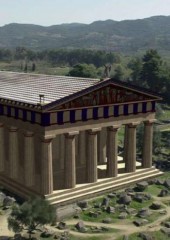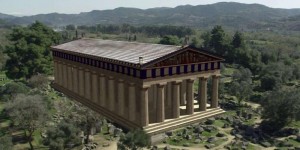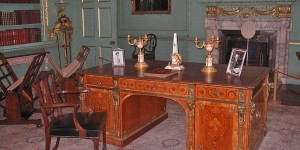Further to Mr Rounce's in-depth breakdown into the careers of Henry Jones Jr and Rene Belloq we feel that it would be wise to offer a similar insight into the career of one of archaeology's most enigmatic figures. Her career thus far, has been one that has attracted much public attention. Indeed she has become something of an ill-advised icon for the discipline in some quarters, but beneath her public persona lies a dangerous and delusional mind, that uses her considerable talents to build her cult of personality and with it do unspeakable damage to the archaeological record and indeed the ecological one as well. I refer, of course, to the self-styled 'adventuress' Lady Lara Croft.
She has received serious criticism recently, following a series of legal tussles with the World Wildlife Fund. At the top of the mountainous list of allegations against her is her supposed involvement in the extinction of a hitherto unknown species of Nordic Yeti (Gigantopithecus nordicus), which is said to have fallen foul of the aristocrat's dubious field practises. When asked about her involvement in this case, Lady Croft has gone on record as saying that the animals simply 'got in her way'. She seemed not to take kindly to the accusation that she had, in fact, been encroaching on their territory when the animals confronted her.
'Look', she said to a bewildered press audience, 'you cannot make serious archaeological discoveries without upsetting the local environment in some way, these discoveries are, actually, of extreme importance so it stands to reason that you should expect a greater impact on the local environment.'
This, following her previous fines for hunting the extremely rare breeds of gigantic spider, has ensured that Lady Croft has remained in the limelight in recent times. However, aside from her lack of respect for conservation practise, this poster girl for archaeology has shown some other disturbing tendencies in her archaeological career.
What little evidence remains of her undergraduate career testifies to this. She first came under fire at the age of nineteen, criticised whilst on her training dig for extremely unusual behaviour. Her supervisor recalls one confrontation, the young first year feverishly attempting to - in her words - 'complete' the remains of a partially destroyed Roman Mosaic. Upon completion of her small section, the supervisor watched dumbfounded as she stared about the site, apparently waiting for something to happen. When nothing did, she left her part of the trench to explore the site, upsetting complete ceramic vessels in the search for, she claimed, a 'magic' key.
Despite these unusual practises, she remained a popular figure around campus, especially credited for her extra curricular activities. Amongst some of the more orthodox societies, Lady Croft was president of FreeRunSoc, Secretary of the Cricketing Team, and Treasurer for the short lived University Advanced Combat Society. She competed and earned medals in cross-university championships for all these societies, and ensured her place in campus history as a well-beloved alumni.
However her problems seemed to intensify when her extra curricular activities began to converge with her academic career. Rumours abound that she would climb ruins to lay the surveying lines, hop from trench to trench over the heads of her fellow students, and could often be seen balancing and performing gymnastics on the site shed. It was a result of these high jinx that led her professors to suggest she did not pursue a further degree in the subject.
This did not dissuade the fledgling field archaeologist from archaeological feats outside of academia. These adventures are funded out of her significant personal wealth, accrued by her father, and undertaken to carry on his archaeological legacy. Despite labelling her explorations as acts of discovery, precious little archaeological information is known about the sites that she has apparently unveiled. This is indicative of her disdain for publication, and despite claims in the media that she has found the site of Avalon, Atlantis, and Valhalla, the artefacts that she has retrieved were not published in any suitable peer reviewed journals, nor is there any evidence that suitable archaeological excavations were carried out on-site. So far she has not expressed her opinions on archaeological theory or practice, nor given any lectures on her more recent projects.
Her academic silence has led to further criticisms of her practise over the years. Religious groups worldwide have petitioned the Croft Estate for the return of their most sacred artefacts, and have attempted various unsuccessful suits against the adventuress for her repeated desecration of religious sites. These charges vary from the shattering of ceremonial vessels and the theft of the objects interred within them, to out and out violence within temples and the destruction of altars and local deities.
When more closely examined, the career of Lady Croft paints a worrying picture. Having established the cult of personality around her self, the young archaeologist seems to have never achieved the academic promise of her more conventional father. Despite this, her love for the more glamorous side of archaeology has driven her into the most poorly understood areas of the world, where outside of any official sanction, she has been able to do unspeakable damage to native cultures and wildlife. As her legal problems escalate, stories from her continually unpublished field reports become ever more ludicrous, the career of this wayward adventuress is coming under more and more fire from mainstream archaeology. Poster girl for the discipline she may be, but now it seems her abhorrent behaviour is starting to catch up with her. Serious archaeologists will have to look elsewhere for their role model.






